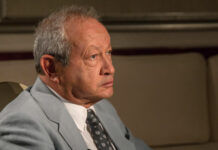
[miningmx.com] – SURVIVAL at a gold price of $1,300/oz is Gold Fields’ mantra and integral to a strategic review after it posted a net loss of $129m in the June quarter (March Q: $27m profit).
The company expects to have completed the review, announced earlier this year, of all its operations in three months. This study will determine which of its assets fit its declared margin parameter.
On completion of the restructuring, Gold Fields wants all its operations to present it with a 10% to 15% margin per ounce. “That’s after all the bills have been paid, the whole lot, ” said Gold Fields’ CEO Nick Holland.
The company is part way through what investors hope is a metamorphosis aimed at achieving decent returns in more stable jurisdictions for the group. Gold Fields is now a mid-tier gold company following the unbundling of its South African assets into Sibanye Gold. Ranked in terms of annual output, Holland said the company would be number 10 or 11 globally.
The restructuring is a sign of the time because investors have become increasingly wary of the volatility of the South African mining sector. These worries extend to concerns about political and labour uncertainty, deep-level mining and lower grades.
These factors have been compounded by a weakening gold price. Gold Fields started the process earlier this year when it spun off the majority of its South African assets into Sibanye Gold.
In terms of the unbundling, Gold Fields relinquished Beatrix and the Kloof and Driefontein mines but it retained its massive South Deep deposit, although some investors may be wishing it had not.
Holland said logistical, transport, and equipment problems at South Deep meant it was not managing to get sufficiently good grades.
As a result, it now seemed unlikely that the mine would reach its stated target of producing 700,000/oz of gold a year by 2016. Holland would not be drawn on when it would reach that target.
He was adamant, however, that the mine remained a key element of the international gold company’s portfolio.
“We see South Deep as a key part of our future. We have spent the big bucks already, (Gold Fields will invest a further R1.9bn developing the mine this year) and completed the hard work,’ said Holland.
When it was operating, Holland said the mine will operate well within in the $1,300/oz producer cut-off mark. On a notional cash expenditure basis, South Deep should be producing at $900/oz, said Holland.
While it is still carrying out its strategic review, Gold Fields’ Arctic Platinum project in Finland, its Talas copper gold project in Kyrgyzstan, and the Woodjam project in Canada are for sale. The future of the Yanfolila project in Mali is still being considered.
“We will not sell the FSE S project in the Philippines but Yanfolila could be on the block,’ said Holland.
Gold Fields’ production dropped 5% on the March quarter to 451,000/oz in the three months to the end of June owing to a result of a strike at its mines in Ghana. The group had to take a once-off-impairment cost of $127m at Tarkwa and Damang.
Said Holland: “We are committed to Ghana irrespective of the tax situation (there have been calls for higher taxes). Tarkwa is a wonderful mine, and it will be for years to come. Damang we will have to accept that it might be put on care and maintenance’. A decision on Damang’s future is expected in February.
Just as it plans to sell some of its operations, the company is still adding ounces through acquisitions and said today that it was to spend $300m buying Canadian gold miner, Barrick’s Yilgran South assets in Western Australia. The projects include Granny Smith, Darlot and Lawlers.
The deal, which will either be paid in cash or half cash and half shares, should bring synergies between Gold Fields’ existing Australian assets especially its Agnew mine and the new edition, Lawlers.
The ore bodies lie in close proximity and Holland said the company was considering a “link drive between both ore bodies’. It expects to save $18m a year through consolidation and rationalisation of processing costs while “integrated site management’ could serve up yearly savings of $10 to 15m.
The price at $104 for each reserve ounce bought looks competitive when compared to other deals.
“I think the acquisition is value adding. There are a number of synergies with Agnew and across its Australian operations,’ said David Davis, an analyst for Standard Bank Group Securities.
The new projecs have relatively short reserve lives, but Holland said taking Gold Fields St Ives and Agnew mines as models, the cost and possibilities to expand the lives of the new mines would be similar. At St Ives and Agnew reserve ounces have been added, over time, at a cost of $50/oz.
There will be no interim dividend payment and given the gold price volatility and labour issues, where strikes could further knock Gold Fields’ South African production, the jury is out on whether there will be a full-year dividend payment.
The company made it clear it was sticking to it policy that it only pays dividends from earnings.










